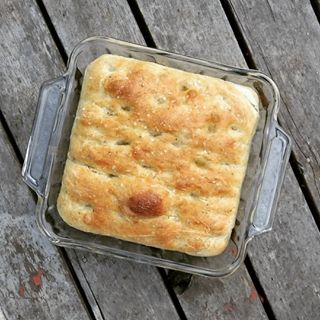
I’ve mentioned many times in many different places that Michael Ruhlman’s book Ratio changed my life. The ratio given for bread in that book is 5:3 flour to water, which represents a hydration rate of 60%.
It’s not a huge change, but I’ve started using 3:2 (67% hydration) for many of my workhorse bread recipes, notably pizza dough (which I’ve already posted here), pita dough (which I hope to post shortly), and a standby I’m calling pan bread. I find that this ratio, when kneaded properly, makes super-tacky but workable dough that ultimately yields a much better crumb.
In the spirit of Ratio, I love to tailor the flavours in this pan bread to fit how it will … Continue reading.





